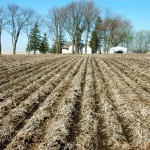
Before you buy that drone
Even in precision ag, it’s unwise to lose sight of the ‘fundamentals-first’ approach to good agronomy

Where do you cut when you have to cut costs?
As crop prices drop, growers have a new focus on cost containment. Weed control is always a big bill, so it’s only natural this gets a hard look — but taking the wrong steps could cost you money

20 questions for your N program
Start the discussion now, before heading to the field this spring

Corn isn’t just about crop heat units
New shorter-season hybrids are just part of the Prairie corn picture. Just as important will be the local research to fine-tune how they’ll fit into the production system

Big data in Canadian agriculture? Not yet
Precision agriculture proponents are convinced that the technology will pay off, but that data collection needs to be standardized and not require farmers’ time during the busy seasons

Do your homework before jumping into growing soybeans head first
Soybean Guide: Soybean varieties and the business case for growing them have been improving, but Saskatchewan isn’t Iowa yet. Even seed salesmen recommend going slowly at first

Going underground for soil ecology
Soil is far more than just dirt. Are you nurturing the organisms that help it grow great crops?

To sample, or not to sample (soil). Who’s right?
Some of your neighbours have stopped soil sampling. Others are sampling more than ever.

Where water leaves the farm
Improve your productivity by starting where water leaves your farm, and then work backwards



